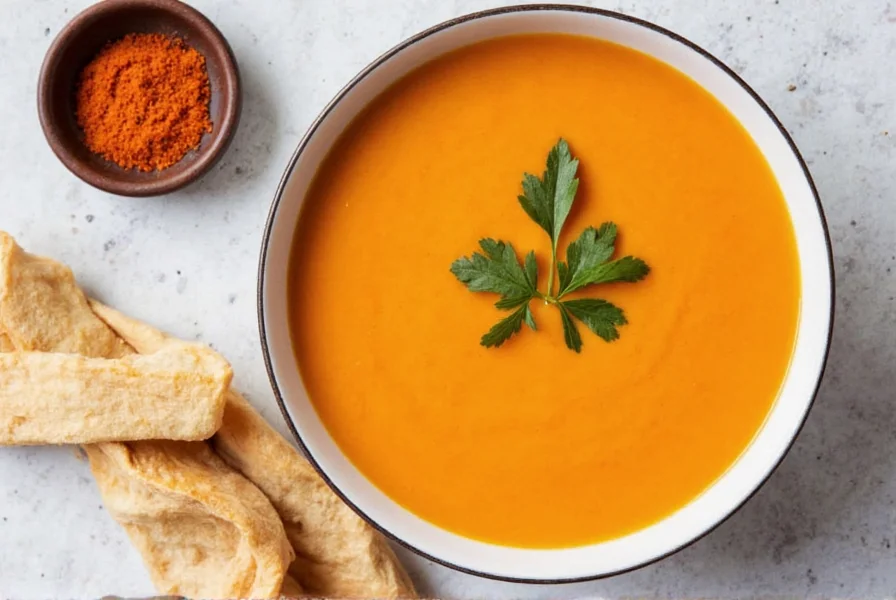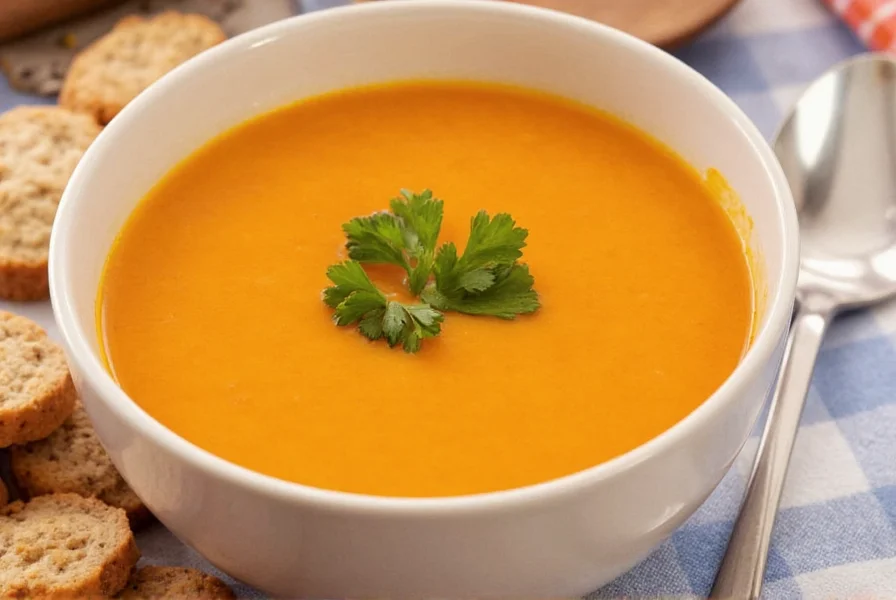Carrot ginger soup has become a staple in health-conscious kitchens worldwide, and for good reason. This vibrant orange soup combines the natural sweetness of carrots with the warming spice of ginger to create a dish that's both nourishing and deeply satisfying. Whether you're seeking immune support during cold season or a light yet filling meal option, this soup delivers exceptional flavor and nutritional value without complicated preparation.
The Science-Backed Health Benefits
Carrot ginger soup isn't just delicious—it's a powerhouse of nutrition. Carrots provide beta-carotene, which your body converts to vitamin A, essential for vision health and immune function. Just one cup of this soup delivers more than 200% of your daily vitamin A requirement. Fresh ginger contributes gingerol, a bioactive compound with potent anti-inflammatory and antioxidant effects that may help reduce muscle pain and soreness.
Research published in the Journal of Medicinal Food shows that regular consumption of ginger can support digestive health by accelerating gastric emptying. The combination of fiber from carrots and the digestive properties of ginger creates a synergistic effect that promotes gut health. This makes carrot ginger soup for digestive wellness particularly valuable for those with occasional digestive discomfort.
Essential Ingredients and Their Roles
The magic of a perfect homemade carrot ginger soup recipe lies in understanding each component's contribution:
| Ingredient | Function | Substitution Options |
|---|---|---|
| Organic carrots | Base flavor and color, vitamin A source | Parsnips (for different flavor profile) |
| Fresh ginger root | Provides warmth and anti-inflammatory properties | 1 tsp ground ginger (less potent) |
| Yellow onion | Builds flavor foundation | Shallots or leeks |
| Vegetable broth | Creates depth without dairy | Chicken broth (non-vegan option) |
| Fresh thyme | Adds herbal complexity | Rosemary or sage |
Step-by-Step Preparation Guide
Creating the perfect easy carrot ginger soup from scratch requires attention to technique rather than complexity. Follow these professional tips for restaurant-quality results at home:
- Prep ingredients properly: Peel and roughly chop 1.5 pounds of carrots into uniform 1-inch pieces. Finely mince 3 tablespoons of fresh ginger—this releases more flavor compounds than grating.
- Sweat aromatics: In a large pot over medium heat, combine 1 chopped yellow onion with 2 tablespoons of olive oil. Cook until translucent (about 5 minutes) without browning to build flavor foundation.
- Develop flavor layers: Add minced ginger and 3 chopped garlic cloves, cooking for 1 minute until fragrant. This step is crucial for maximizing the immune-boosting properties of carrot ginger soup.
- Simmer to perfection: Add carrots, 4 cups vegetable broth, 1 teaspoon salt, and 4 sprigs fresh thyme. Bring to boil, then reduce heat and simmer covered for 25-30 minutes until carrots are fork-tender.
- Blend for silky texture: Remove thyme sprigs, then carefully transfer to blender. For ultra-smooth results, blend in batches with the lid slightly ajar to prevent pressure buildup. Alternatively, use an immersion blender directly in the pot.
- Finish with finesse: Return to low heat and stir in 1 tablespoon lemon juice to brighten flavors. For creaminess without dairy, blend in 1/4 cup coconut milk.

Dietary Adaptations and Variations
This versatile recipe accommodates various dietary needs while maintaining exceptional flavor. For a vegan carrot ginger soup preparation, simply ensure your broth is plant-based and skip any dairy additions. Those following a low-FODMAP diet can substitute the onion with 4 chopped green onion tops and use garlic-infused oil instead of fresh garlic.
For added protein, stir in 1/2 cup cooked lentils before serving. If you prefer a spicier version, add a pinch of cayenne pepper or a few slices of fresh red chili with the ginger. The carrot ginger soup with coconut milk variation creates a richer texture while adding healthy fats that help absorb the fat-soluble vitamins in carrots.
Serving and Storage Recommendations
Serve your carrot ginger soup for immune support immediately for best flavor, garnished with fresh cilantro, a drizzle of coconut milk, or toasted pumpkin seeds for added crunch. The soup maintains its nutritional integrity when stored properly:
- Refrigeration: Store in airtight container for up to 5 days
- Freezing: Portion into freezer-safe containers for up to 3 months
- Reheating: Warm gently over medium-low heat, adding small amounts of broth if needed to restore consistency
Interestingly, the flavor often improves after 24 hours as the ingredients meld together. This makes meal prep carrot ginger soup an excellent option for weekly planning. When reheating, avoid boiling to preserve the delicate flavor compounds and nutritional content.
Frequently Asked Questions
Can I make carrot ginger soup without broth?
Yes, you can substitute vegetable broth with water plus 2 tablespoons of nutritional yeast for umami flavor. While broth enhances depth, the natural sweetness of carrots and complexity of ginger create satisfying flavor even in a simplified version. For best results when using water, sauté the aromatics longer to develop more flavor before adding liquid.
How can I reduce the spiciness of ginger in the soup?
To moderate ginger's heat while preserving flavor, peel and slice the ginger root rather than mincing it finely, then remove the slices before blending. You can also balance the spiciness with 1 teaspoon of honey or maple syrup added at the end of cooking. Starting with 1 tablespoon of ginger and adjusting to taste during preparation gives you better control over the final heat level.
Is carrot ginger soup suitable for weight loss diets?
Absolutely. A one-cup serving contains approximately 120-150 calories while providing 5 grams of fiber and significant vitamins. The high fiber content promotes satiety, making it an excellent choice for weight management. For lowest calorie version, omit coconut milk and use water instead of broth, though this slightly reduces nutrient absorption of fat-soluble vitamins.
What's the best way to store leftover carrot ginger soup?
Cool the soup completely within 2 hours of cooking, then transfer to airtight glass containers leaving 1-inch headspace. Refrigerate for up to 5 days or freeze for up to 3 months. When freezing, portion into single-serving containers for convenient reheating. Avoid storing in metal containers as the acid from ingredients like lemon juice can react with the metal.
Can I use ground ginger instead of fresh in this recipe?
While fresh ginger provides superior flavor and more potent health benefits, you can substitute 1 teaspoon of ground ginger for each tablespoon of fresh ginger. Add ground ginger early in the cooking process to allow time for flavors to develop. Note that ground ginger has a different flavor profile and lacks some of the volatile compounds found in fresh ginger that contribute to its digestive benefits.











 浙公网安备
33010002000092号
浙公网安备
33010002000092号 浙B2-20120091-4
浙B2-20120091-4